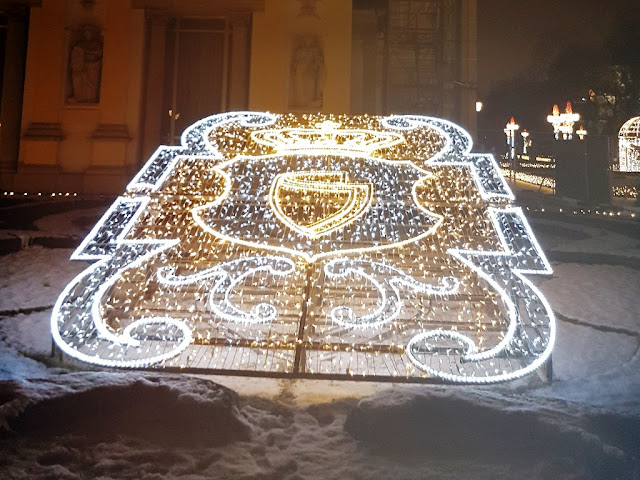Today I would like to show you the capital of country that is really large but only recently appeared on the map of Europe. Ladies, gentleman and horses - welcome to Kyiv.
Let's start at at the Golden Gate, the same place where, according to the legend, the Polish King Boleslaw I the Brave, used his sacred sword Szczerbiec for the first time Szczerbiec takes his name from a notch that was supposed to be chipped when the king has hit the gate.
But in fact the Golden Gate was constructed only 19 years after Boleslaw made efforts to support his son-in-law, Sviatopolk I of Kiev, in keeping Kyiv's throne.
His effort was only successful as long as he was in Kyiv's with his army. When he has left, Yaroslaw the Wise has defeated his older brother. During his long-lasting reign, Kievan Rus' reached the zenith of its cultural bloom and military power. You can admire his monument in front of The Gate.
Kyiv has in fact one more Golden Gate. The other one is modern. In fact it is the entrance to the metro station taking its name from the medieval building.
Although the entrance might not seem impressive, the surrounding modern buildings are almost as impressive as the former city entrance.
Another interesting building nearby is the National Opera House of Ukraine. As most of the best buildings in the Ukraine's capital it is called after the poet Taras Shevchenko. It was built in classical style, similar in style to the Opera house of Lviv that we have seen last year.
Just next to the Opera House you can admire the monument of Mykola Vitaliyovych Lysenko, an Ukrainian composer, pianist, conductor and ethnomusicologist.
Behind him you can admire some very nice residential buildings. I would expect that you would have to be a rockstar to afford an appartment in one of them.
And here you can see the other side of the Opera House.
Speaking of rockstars, I am sure that there are quite a few really wealthy people in the city. Just on the other side of the street (yes, the Opera House reflection is visible in the windows) you can buy a Rolls-Royce to come to the opera with proper splendor.
Those who cannot afford a luxury car can always bring some gold to their life through street decorations.
Next week I will show you where Kyiv's name orignates from and its best buildings according to Unesco.





















































